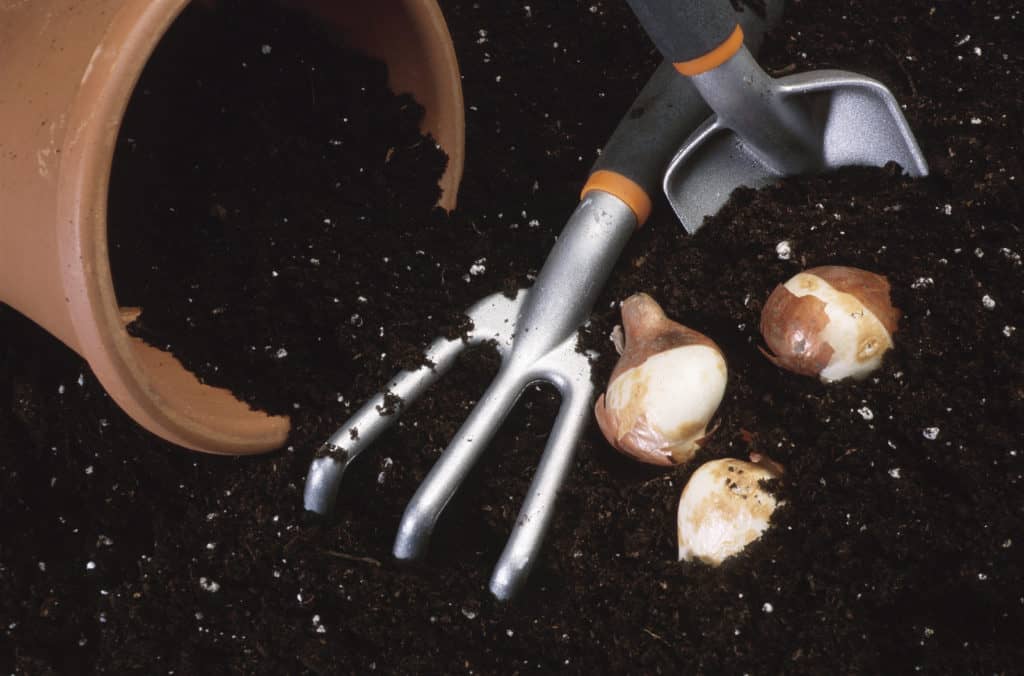Temps have been frosty and your annual flowers have long ago bit the dust. And then…what’s this? Late fall fabulous sneaks up on us and suddenly we’re breaking out the shorts and short sleeves again. Ok well we might not be quite into flip flops again, but it’s not uncommon to see 50s and 60s in the Midwest for a day or 3 or 4 after a period of very cold temps before our deep freeze kicks in.
So what can we do in the garden during this time? Plenty! Here are some of my best ideas for how to use this unexpected, unseasonal warmth.
- Water
If you planted new plantings in the past year and especially if you planted new perennials, shrubs or trees this fall, use this nice stretch of weather to get in some deep watering. Often watering chores taper off when the temps turn cold, but recent additions to your garden or yard need consistent water right up until the ground freezes. If nature hasn’t provided roughly an inch a week, be sure to supplement. You can certainly do this anytime, but it sure is a lot more enjoyable when the weather is nice and your plants are more likely to take up more of the moisture when the warm temps keep them out of winter dormancy a bit longer. Just don’t forget to disconnect that hose if you reconnected it to water. Frozen, burst pipes are never on anyone’s wish list for winter.
2. Clear your veggie gardens
If you find yourself behind on clearing your veggie gardens, or never knew you needed to, these little warmups are a great time to get this important task done before the snow flies. Clearing your vegetable gardens in the fall is an important step to preventing the start or spread of disease in your veggie beds.

For perennial flower beds though, let those plants stand! By leaving these gardens until spring you’re supporting hundreds of varieties of beneficial insects, bees and even the larvae of future moths and butterflies. Additionally, leave the fallen leaves in your flower beds. The leaf cover protects your plants and provides another layer of shelter for nature’s creatures. Many of the leaves will breakdown by spring. If not, you can break them up or remove them when you cut back your perennials ahead of spring’s new growth.
3. Pull weeds
Fall is a great time to make a dent in your weeds. Walk your perennial beds with a bucket and your digging tools and get rid of those dandelions, thistles, and other non-welcome species that are lingering. This is best done after a recent rain to help them slide out easily. The natural die-back of some of our perennial foliage also makes it easier to spot the weeds that may have spent the summer season hiding amongst your beloved plants.
4. Plant flower bulbs or garlic cloves
You’ll hear and read lots of wisdom on the right time to plant flower bulbs or garlic cloves in the fall. Yes, October is often referenced as the ideal time to plant these joys of future seasons and I don’t disagree. However, if you just didn’t get it done don’t despair. If you can get through the ground, before it freezes hard as a rock, you can still plant. Indeed, I’ve procrastinated, or life just plain got in the way of my dreams of perfectly “on time” plantings more than once over the years. And guess what? Everything was ok. The flowers still bloomed the garlic still grew beautifully. Nature endures and often overcomes our less than ideal timing. So pop those bulbs and cloves in the ground and get growing!
My blog post, Growing Glorious Garlic, will show you what to do with the fabulous pungent little cloves. For flowering bulbs, the general rule of thumb is to plant the bulbs 2 to 3 times deeper than the height of the bulb, pointy side up in a sunny location. This means that most large bulbs like tulips and daffodils are planted about 6 inches deep. Smaller bulbs are generally planted 3 to 4 inches deep.

5. Clean ‘em up and put ‘em away
Don’t forget to clean those tools that helped you so much over the busy spring and summer seasons. Late fall’s surprise warm days are great for cleaning tools, sharpening blades and applying a light coating of household oil to protect them.
Along with giving a little love to your tools, clean up that shed, organize your hand tool caddy and generally ready yourself for the spring season that will be here again in just a few months.
6. Rest and dream of sunny skies and warm temps to come
Don’t forget to do a little dreaming about next year’s garden! As the cold inevitably returns, and you grow weary of being cooped up, do a little planning for next year. Don’t fret, the seed catalogs will be in mailbox any day now. And never forget…hope springs eternal in the garden!
SHARE IT ON PINTEREST

